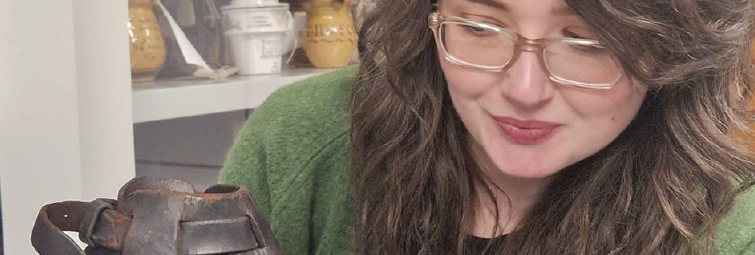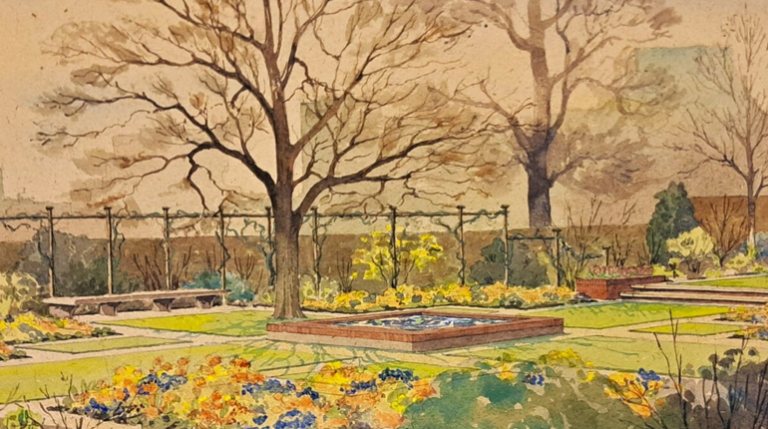The Tractor Whisperers (an April Fool’s)
-
Author
-
Published Date
- April 1, 2021

<<<<<<Written by Tim Jerrome.
In the first half of the 20th century, Britain was home to myriad secret agricultural societies, such as Horseman’s Word. Yet there was one society which, for many, was only a myth. Known as the Tractor Whisperers, the secretive Order of Credulum tilled the shadows of 20th century rural England, achieving great magical feats to get the very best from the humble tractor.
In this blog, join us as we explore the early history of tractor development in England, the clandestine world of the Tractor Whisperers, and their most remarkable arcane accomplishments.
The Age of the Tractor
Until the end of the 19th century, steam power was at the forefront of agricultural mechanisation. Portable steam engines and traction engines began to arrive in the 1840s. John Fowler’s steam ploughing inventions in the 1850s were particularly crucial. However, steam engines tended to be quite large and unwieldy, and were not particularly fuel efficient. American entrepreneurs caught onto this and began experimenting with petrol engines, which were powered by internal combustion. This resulted in the production of the very first tractors in the 1880s.[i]
Most of the initial American tractors were huge beasts used for haulage. When British firms caught on, they took a different approach. Horses were yesterday’s news, and tractors were seen as the modern alternative for ploughing. Professor John Scott demonstrated his 20 horsepower tractor at the 1900 Royal show, but was met with criticism by those whose livelihoods depended on horse breeding. Meanwhile, Dan Albone created a three-wheeled tractor, replete with a cooling tank and a whole 24 horsepower. Named the Ivel, it was an international hit, earning a medal from Italy’s Ministry of Agriculture and becoming the centre of attention at the 1904 Paris show.[ii]
New Tractor Just Dropped
However, it was the introduction of the Fordson tractor in 1917 which truly signalled the triumph of the petrol tractor over steam power. Not only had steam-powered cars been driven to near extinction by the Ford Model T; the same phenomenon occurred with tractors. The First World War, and the resulting nationwide conscription, led to a serious shortage of manpower in British fields. As is the case with so many questions in life, tractors were the answer.
The very first order of Fordson tractors by the British Ministry of Munitions totalled 6,000 units and set this legendary machine on its path to success. Despite undergoing multiple refinements, the Fordson remained a dominant force in British ploughing for the next several decades.[iii]
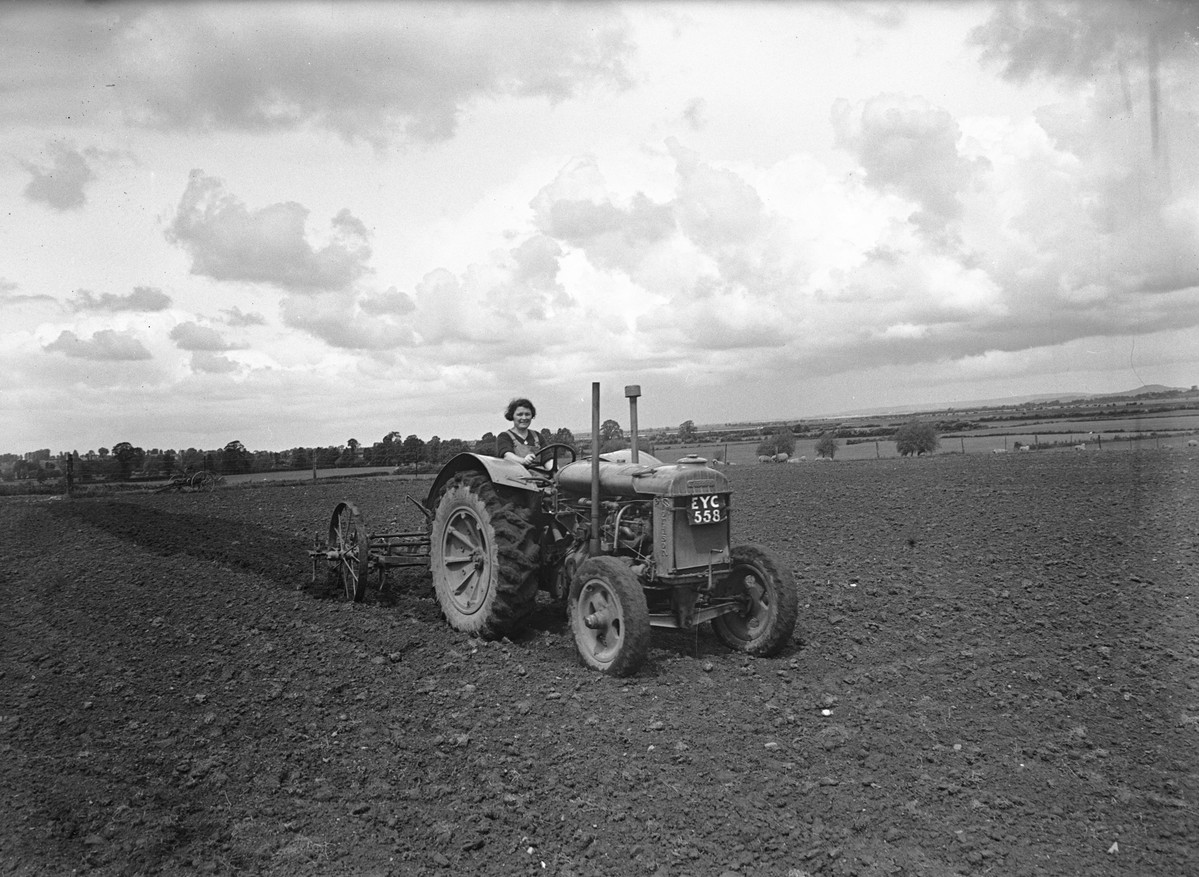
Origins of the Tractor Whisperers
It is at this stage of tractor history that accounts of the Order of Credulum begin to surface. Little is known of their origin. The most likely speculation is that the Order began its life as a ‘Friendly Society’, which were community organisations designed to provide financial security to members at a time when poor laws were hopelessly inadequate.[iv] When the 1911 National Insurance Act rendered these societies obsolete, it seems some of the Order’s previous members turned their attention to new, more arcane pursuits. This was especially true in South West England, where the Order seemed to be particularly prominent.
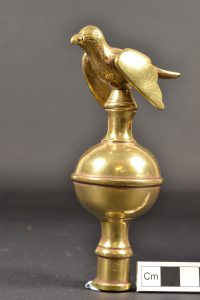
One thing of which we can be sure is the origin of the Order’s name. The fable of Credulum, which has since faded from British culture, is one that was frequently told to farmers’ children at the time. Credulum was a Roman farmer whose oxen seemed to plough at a supernatural speed, which was attributed to his frequent sacrifices to the god of sowing, Saturn.[v] The Order adapted this tale for modern times, and even did their best to replicate Credulum’s practices. Accounts exist of ritualistic sacrifices held in barns: worn clutch plates were often broken in roaring fires to appease the pagan god.
The initiation ceremony into the Order was equally bound in secretive ritual. The essence of the ritual was to overcome problems that the Fordson tractor would itself face during its time on the field. One commonly cited issue with the Fordson was its tendency to tip over backwards on its hind wheels.[vi] Initiates would dress up as a part of tractor machinery (one branch in Somerset used a large grey cloak to impersonate an engine cylinder) and sit on the fence of a partially-ploughed field. Elder members of the Order would then run at the initiate, and attempt to tip them backwards off the fence. If they managed to keep their seat, the initiate was deemed worthy of controlling tractors by magical means, and would be welcomed into the Order’s ranks. A magical cape would be presented to the new recruit, together with a spectacularly full harvest jug of scrumpy, for them to enjoy at their own leisurely pace.[vii]
Outstanding in their field
But what exactly were the Order’s sorcerous feats? One will be familiar, as its legacy has survived well into modernity. The spell sought to power a tractor without the use of any fuel, thus significantly reducing the working cost of the machine. It involved driving a tractor out of the farm and onto a country road, before slowing down and ensuring a queue of cars built up behind. For every car that was caught in the queue, the tractor would gain an extra hour of power via the enchantment cast beforehand. Many farmers still try to replicate the spell, though its level of success on contemporary roadways is unknown.[viii]
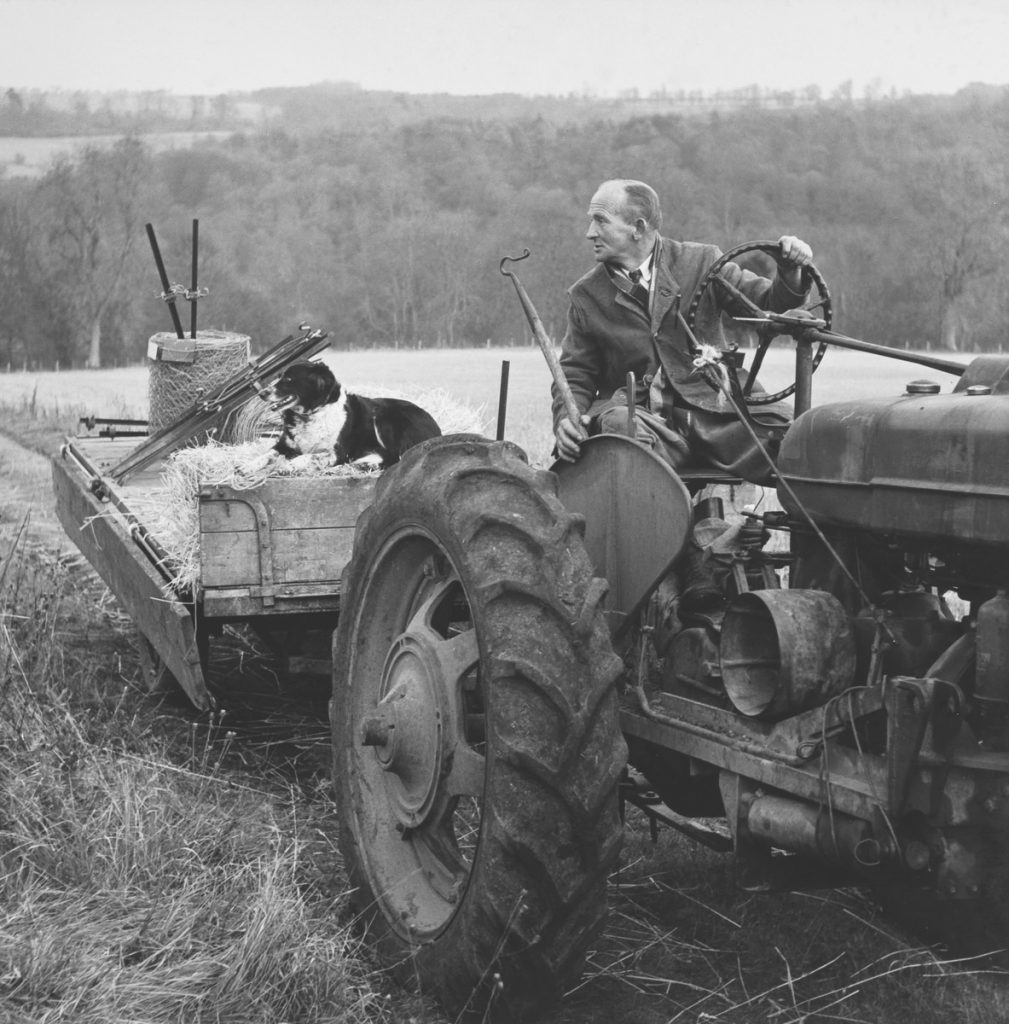
It’s Fordsonium Levi-OOO-sa, not Fordsonium Levio-sa
Most of the whisperers’ work was conducted on the field. But in some cases, they worked their magic above it. As mentioned before, many Fordson tractors suffered from the issue of tipping over backwards when crossing difficult terrain. The ingenious solution of some whisperers ensured that terrain would no longer be an issue. If a particularly potent sacrifice had been performed that day, such as an old water tank, evidence suggests that a tractor could be mysteriously levitated to a height of several feet, and even moved back and forth. To witness this spectacle, small crows would often gather. One eyewitness recalled: “It was incredible. I felt rooted to the spot in amazement.” Another stated: “This will take my ploughing to new heights.”[ix]
Unfortunately, the popularity of what became known in popular magical media as a Flying Fordson soon declined, as farmers realised that no manufacturer could produce a plough large enough to till the earth whilst the tractor was in flight.
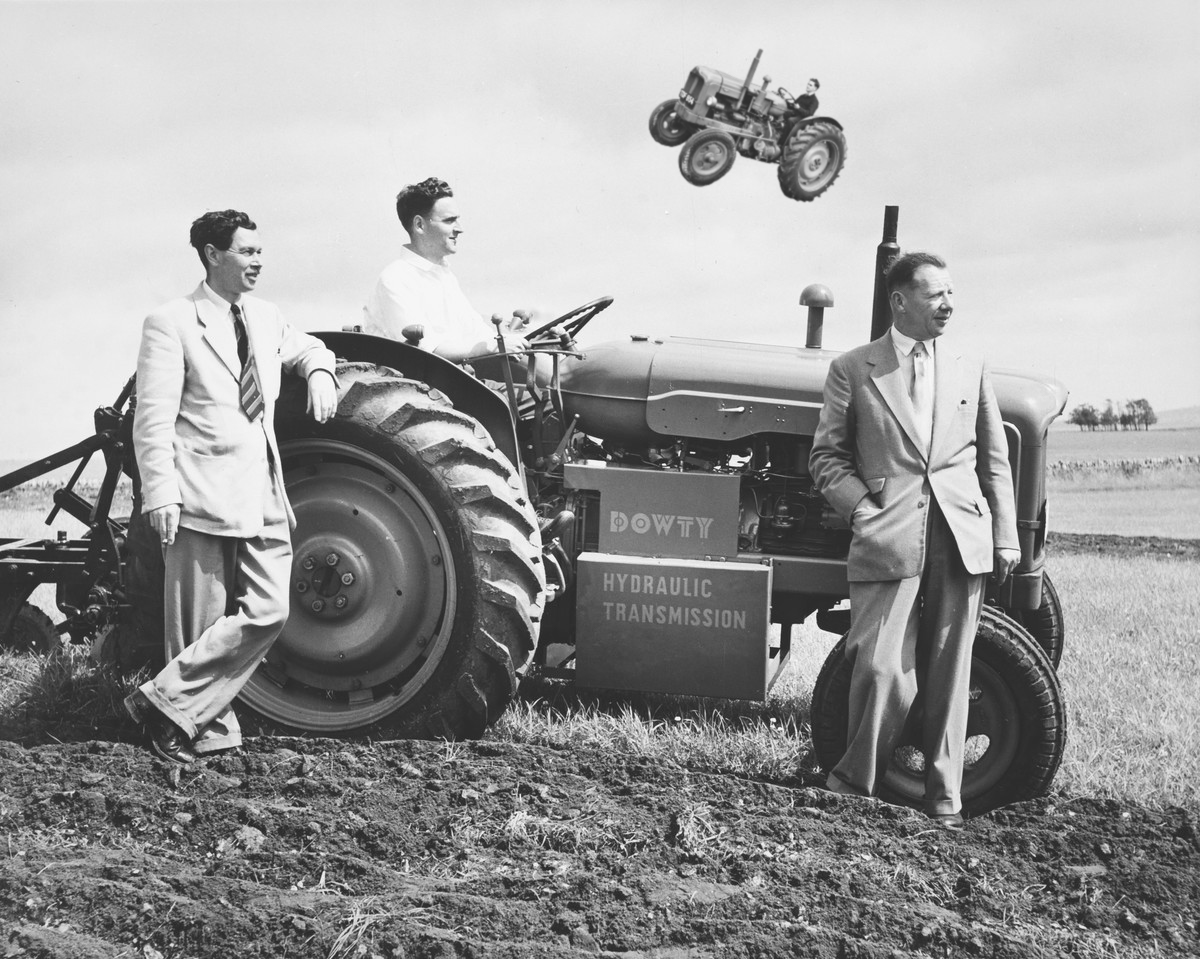
Agents of F.I.E.L.D
Although most of the Order’s magic served the farming community exclusively, the Whisperers were willing to serve a national cause in times of crisis. Throughout World War 2, the Allies eagerly sought a way to improve their cloaking technology in order to protect troop movements and military secrets. For example, The Royal Canadian Navy fitted two of its corvettes with light projectors which would disguise the ships against the horizon.[x]
However, the Tractor Whisperers took this one step further, and, in an idiosyncratically ambitious manoeuvre, which somewhat epitomises their spectacle-heavy modus operandi, the Order harnessed the secrets of illusory magic to make their tractors disappear. So was born the Stealth Tractor, which enabled farmers and Whisperers alike to plough in peace, whilst ensuring that the secrets of English rural history would never fall into enemy hands, protected from the prying eyes of enemy spy planes.
The War Office attempted to convince the Order to work their magic on vehicles beyond tractors. This was considered such an insult that the Whisperers vowed to never cooperate with central government again.[xi]
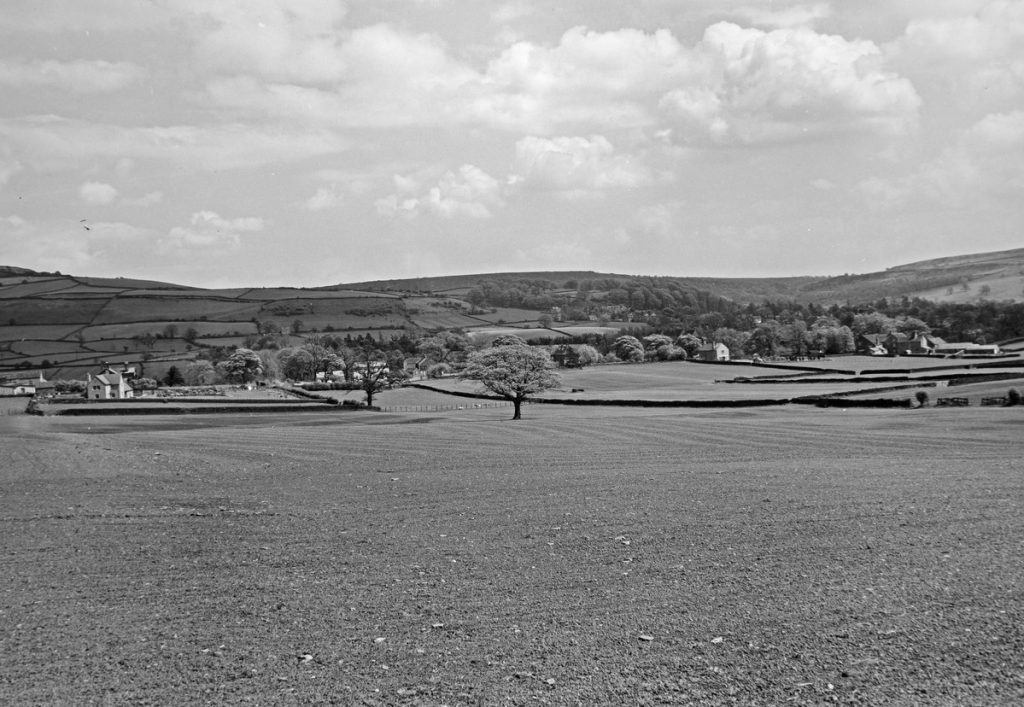
The Phony Pony War
Government ministers were not the only people with whom the Order saw conflict. They were also embroiled in a struggle against Horseman’s Word, who feared their society would become irrelevant if horses were no longer used for ploughing.
Today, the prevailing understanding of the events is that the war never escalated to outright wizards’ duels in the streets. But both sides of the rivalry did their best to disrupt their foe. Many Fordson owners reported instances of waking up to find a row of horses blocking their tilling progress, or finding crumbled oatcakes scattered in their tractor’s engine.[xii] On the other side, horse breeders would be constantly disturbed by the loud revving of tractor engines just outside their stables, which vanished as soon as they went to investigate.[xiii]
Academics today still debate whether the conflict had a victor in the true sense of the word. One eye-witness stated : “It was all very much up in the air. At least, when the Flying Fordsons got involved.”[xiv] It is our hope that the two factions made peace and share knowledge and secrets to this day.
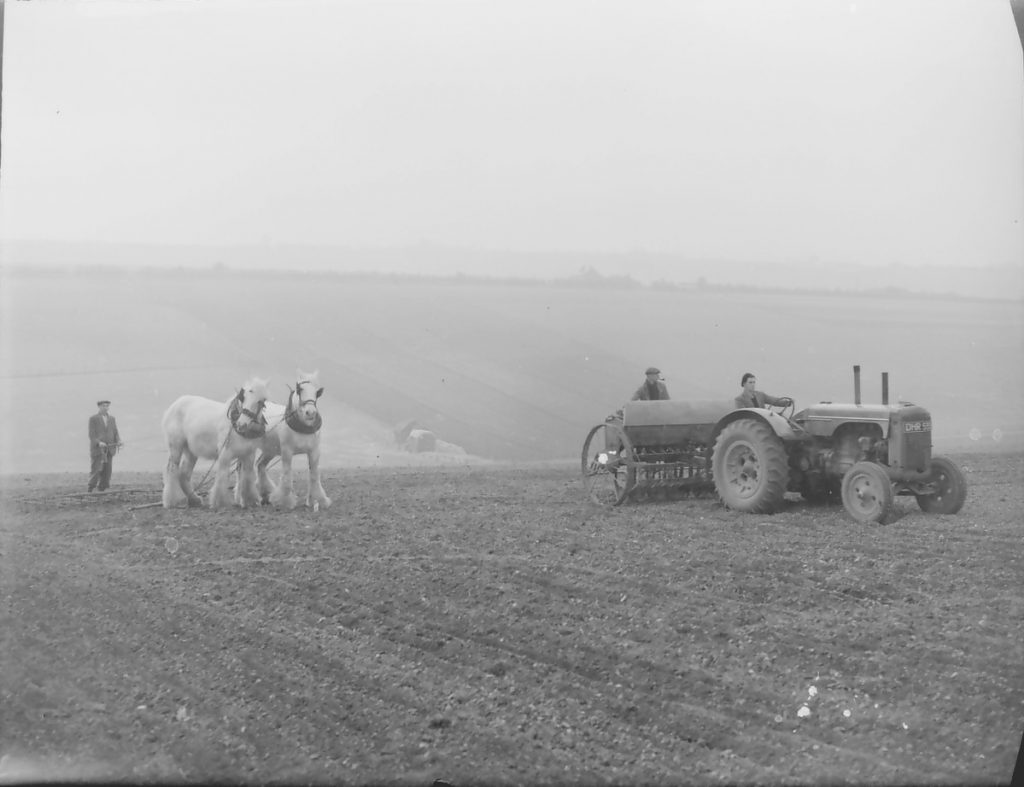
Increased public scrutiny of the Tractor Whisperers forced them to officially disband in 1966. Yet if you ever look at a tractor and see it hovering, just for an instant, then pause for a moment and appreciate the enduring power of tractor witchcraft. And if you’ve reached the end of this blog and have no idea what’s going on, then please check the date this was published. We hope that clear things up.
We hope you have enjoyed our special tribute to all things foolish and daft. For other, entirely true stories from England’s rural past, keep exploring The MERL blog!
From Wednesday 14th April, you can visit The MERL shop, garden and café, which features a tractor you can actually climb on! Please note that all café seating is outdoors. No booking required.
[i] Williams, Mike, ‘Machinery Milestones: The World’s First Tractors’ Farmers Weekly 09/06/2020. Accessed on 18/03/21 via https://www.fwi.co.uk/machinery/tractors/machinery-milestones-the-worlds-first-tractors
[ii] Ibid
[iii] Pripps, Robert, ‘Birth of the Fordson: Odd-named tractor ushered Ford onto the farm’ Farm Collector 6:8 (2004) pp. 22-23
[iv] Fuller, Margaret, West Country Friendly Societies (Lingfield : Oakwood Press 1964) p. 7
[v] Actor, T. R, ‘Don’t Google the actual meaning of Credulum’ Pretty Please 1:2 (2021)
[vi] Moore, Sam, ‘Ford’s vision: To lift the burden of farming–with the Fordson’ Farm Collector 20:2 (2017)
[vii] Ester, Harv, Tractor Initiation Ceremonies and other Fictitious Recollections (Edoras Publishing 1954) p. 29
[viii] Lough, Phil, ‘Sorry, tractor drivers. We know you’d drive faster if you could’ The Apologetic Blog Author 2:1 (1066)
[ix] Row, S. C, ‘Stand Out in His Field: Life in the Furrow’ Institute of Field and Pest Management (1925)
[x] Roblin, Sebastien, ‘During World War II, the Allies Invented a Cloaking Device. And it Was a Failure’ The National Interest (2018). Accessed on 18/03/21 via https://nationalinterest.org/blog/buzz/during-world-war-ii-allies-invented-cloaking-device-and-it-was-failure-25232
[xi] I assume you’ve stopped coming to the footnotes for actual academic references at this point (although there are quite a few sprinkled in), and where they’re real references, it’s real information. Anyway, how are you? How’s your day going? Are you reading this, mum? You said you read my blog posts!
[xii] Armhand, Frank, My Tractor Brings all the Boys to the Yard (Absolute Unit Press 2018) p. 62
[xiii] Ombustion-Engine, Charles, ‘I hate the 1st April, it sets me on edge’ The Journal of Not Trusting Rural History Museums 4:1 (2021)
[xiv] Stack, H. A., ‘Mastering a corn ollie: Tractor tricks and skill moves’ Rural Racer 9:9 (2008)
*Spoiler alert: this photoshopped image is made from two combined images from the John Tarlton collection, both showing men with Dowty tractors. (MERL P TAR PH3/1/5/3 and MERL P TAR PH3/1/5/5)


